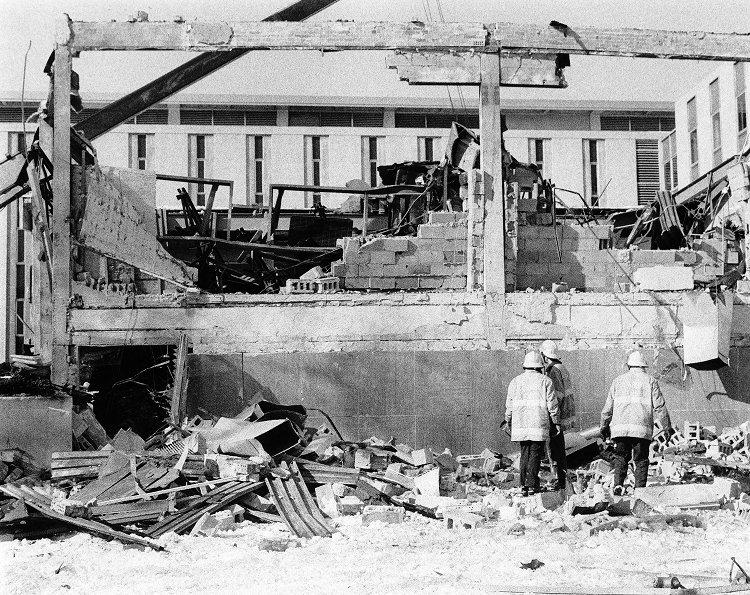Students walk down Fifth and Ruskin Avenues and pass Langley Hall every day, but many have no idea that two people died in an explosion in that very building about 40 years ago.
In The Pitt News’ New Student Guide that was published earlier in the summer, I started a series — Retro Oakland — that focuses on the University’s past and its impact on students today. And buildings on campus are no exception to sharing Pitt’s tumultuous past.
Pitt’s campus has changed drastically since its inception, and there are photographs to prove it — Pitt Stadium’s demolition, Schenley Park’s radical transformation and the construction of what became the focal point of our campus — the Cathedral of Learning. Every day we pass these structures on our way to and from classes, and it’s about time we learn about them.
Langley Hall Explosion
On Jan. 20, 1977, a natural gas leak caused a devastating explosion in Langley Hall. According to Chemical Engineering News, two women — a student and a secretary — were killed in the explosion, and about 47 others were injured.
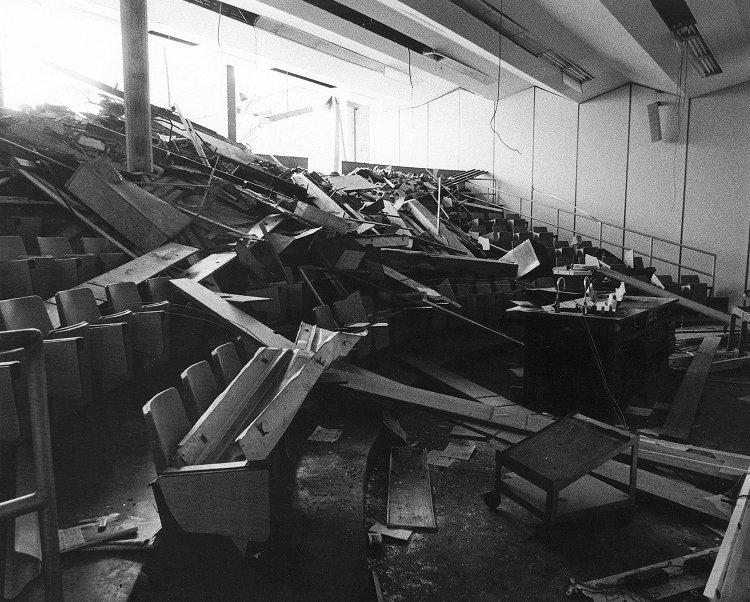
When the explosion occurred, there were roughly 200 people in that wing of Langley Hall, with 160 of them attending a physiology class in a lecture hall. The blast blew out walls of classrooms and labs and collapsed the roof of the two-story concrete and steel building.
The Cathedral of Learning
The Cathedral of Learning attracts a lot of attention not only with its outward appearance, but with its history as well. Our towering cathedral that proudly juts into the clouds is the tallest educational building in the Western Hemisphere and the second tallest university building in the world.
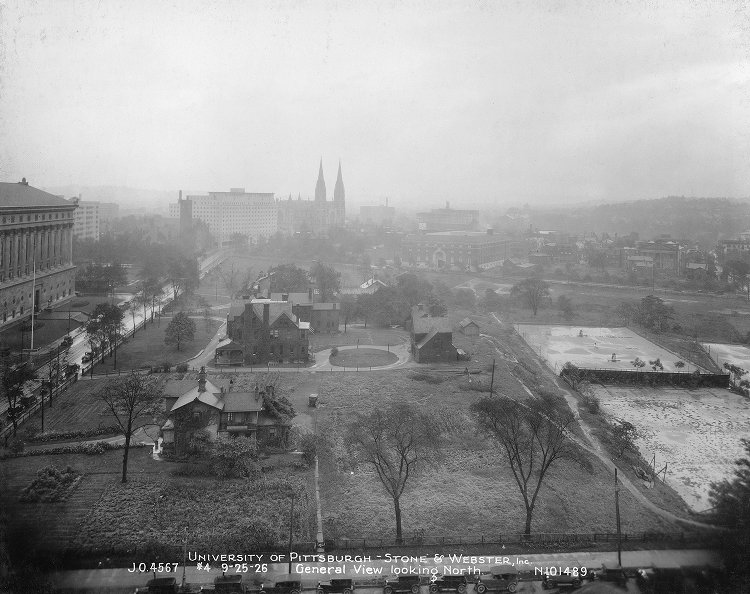
The tenth chancellor of Pitt — John Gabbert Bowman — chose the location for Cathy in 1920 and called on local schoolchildren to contribute what they could to make the building a reality. Children would mail 10 cents each to the University and get a certificate in return.
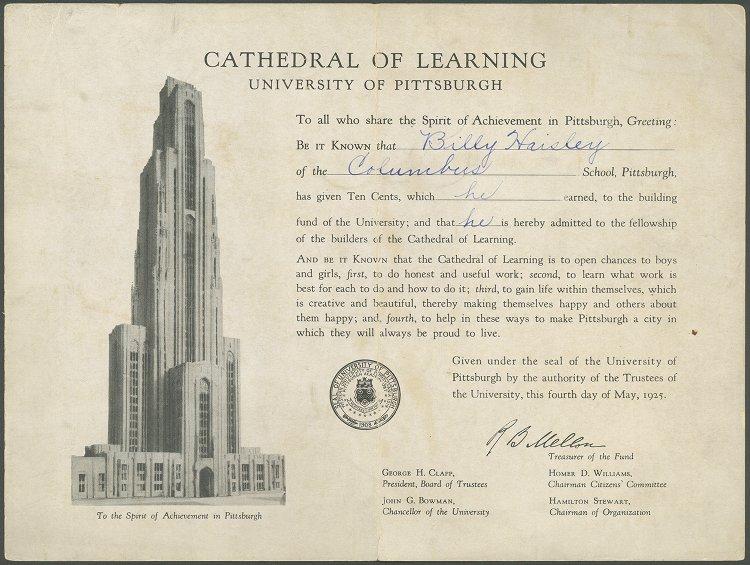
Pitt hired Charles Klauder to design Cathy’s gothic-style facade and Stone & Webster to contract the building. From 1926-1936, workers built the Cathedral from the ground up, and the building now stands at 42 stories and 535 feet tall.
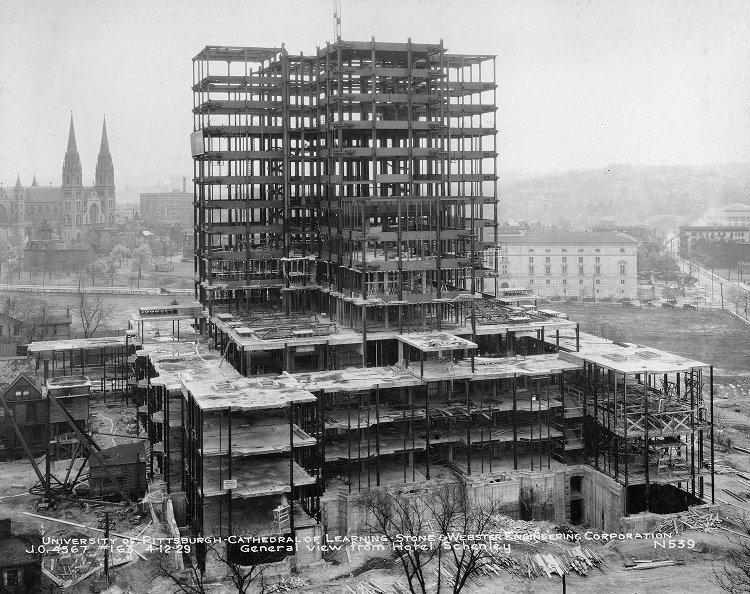
Schenley Plaza
Although most green spaces in cities get transformed into parking lots and apartments, Schenley plaza did quite the opposite — what was once a University parking lot returned to its grassy roots in 2005.
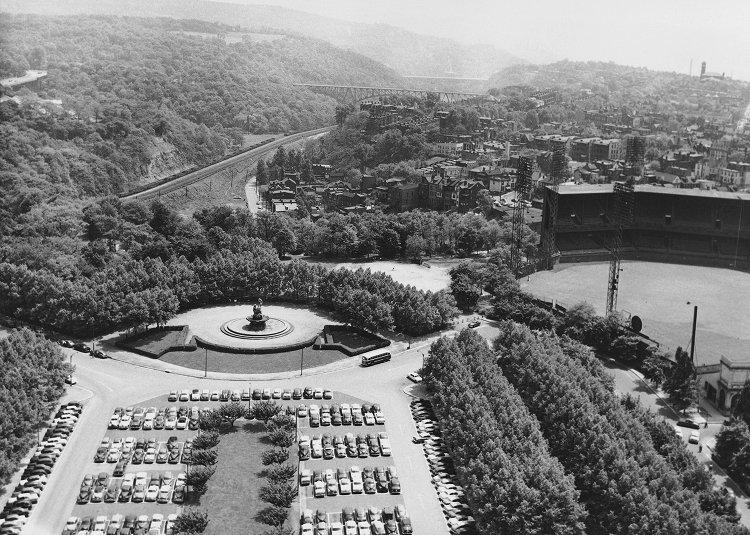
Although some Pitt commuters may grumpily mumble under their breath that the space should’ve stayed a parking lot, others may disagree — the parklet is now home to a landscaped garden maze complete with benches, food kiosks and even a carousel. The plaza also hosts outdoor film screenings, game nights and live performances.
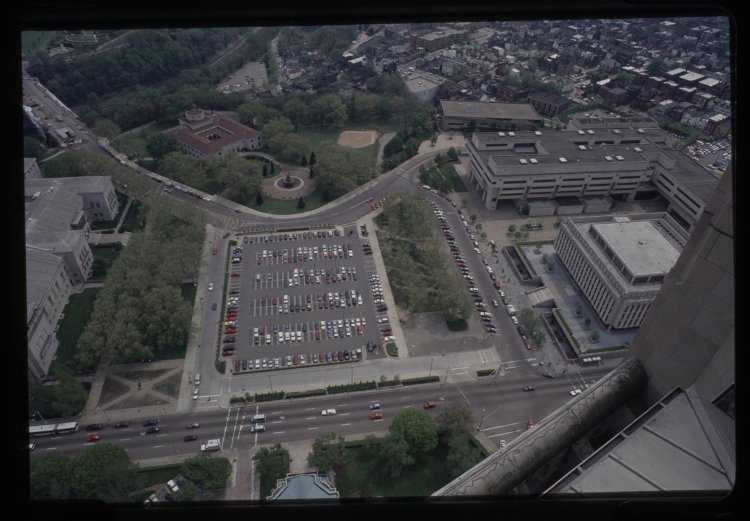
Frick Fine Arts Building
The FFA — named after Pittsburgh industrialist and philanthropist Henry Clay Frick — is arguably the quietest study spot on campus, and its library is ranked among the top 10 fine arts libraries in the United States. Although this photograph from the ’70s is in black and white, it’s obvious that the library in the FFA has hardly changed a bit.
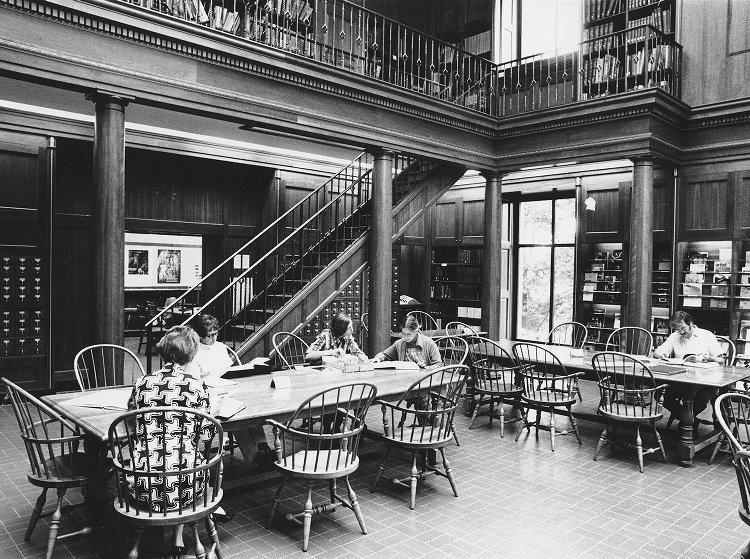
Posvar
Named after the 15th Chancellor of Pitt, Posvar is built on what used to be home of the Pittsburgh Pirates — Forbes Field — and the home plate is still on the ground floor. Posvar is the largest academic-use-only building on Pitt’s campus.
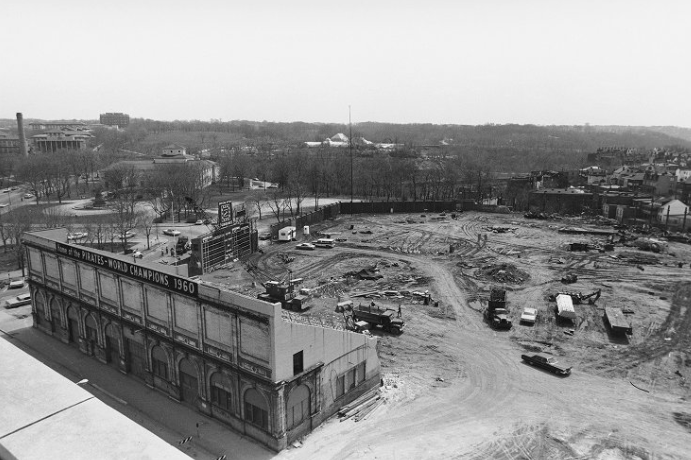
Correction: In a previous version of this article, a photograph of the Barco Law Building was misidentified as Posvar Hall. A correct photo has been added in place of the photo of Barco. The Pitt News regrets this error.



